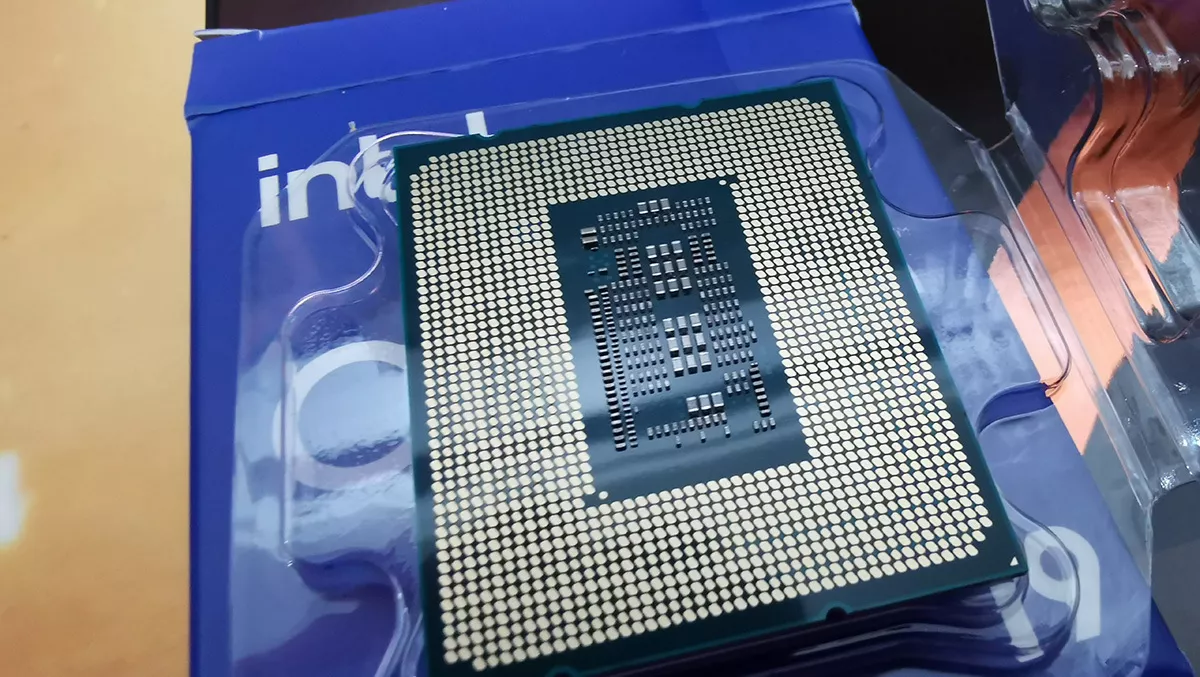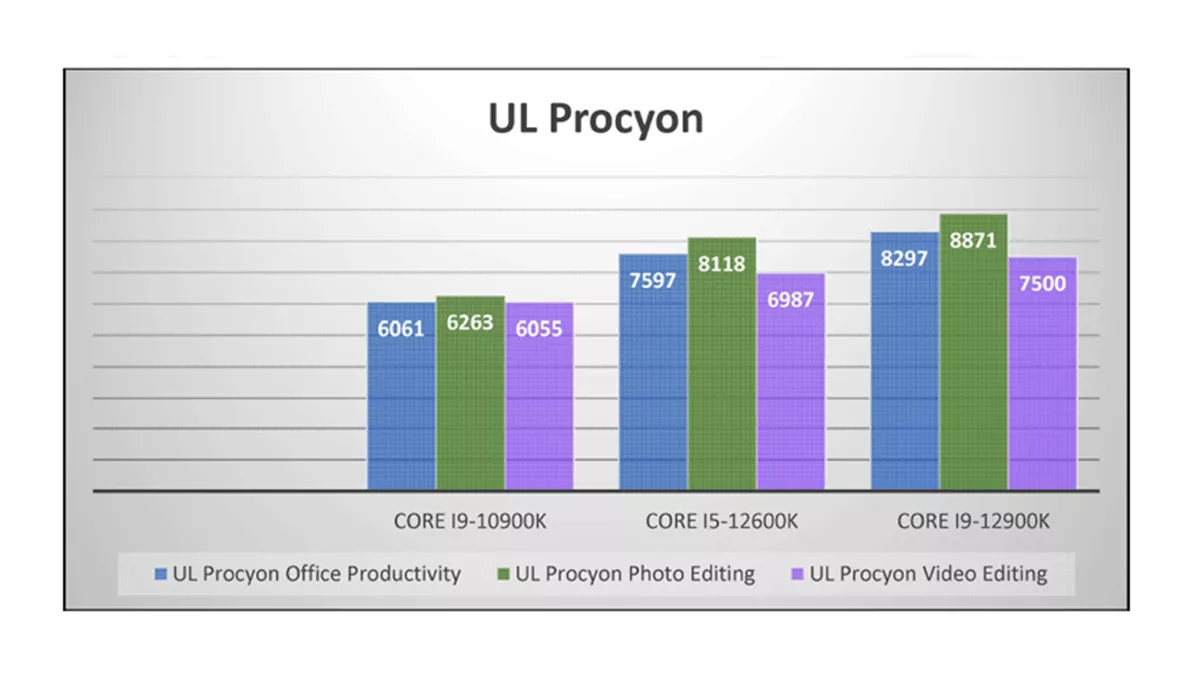
Hands-on review: Intel 12th-Gen Core i9-12900K and Core i5-12600K CPU
After what seems like only a few short months since the last iteration, Intel has launched the 12th generation of its desktop CPUs.
Intel's range of 11th generation Rocket Lake desktop microprocessors were launched in March 2021, not even a year ago. Whilst the performance increase over their predecessors was noticeable, they were still underwhelming. This was likely down to Intel squeezing the last ounce of power from the 14nm fabrication method the company had employed since 2014.
The 12th generation of Intel's Core CPUs, codenamed Alder Lake, not only use new 10nm silicon manufacturing but also feature a new pin layout and a different core arrangement. This means investing in a new motherboard and perhaps a new CPU cooler if upgrading to the new CPUs.
The 10nm silicon should help reduce temperatures. Splitting the CPUs internals up into performance core (or P-Cores) and efficient core (E-cores) for main tasks and background tasks, respectively, should boost performance. This is especially so if working under Windows 11, which can allocate tasks to the respective core to ensure the CPU doesn't get so tied up with housekeeping instructions.
For the review, we were sent a top-of-the-range Core i9-12900K and a Core i9-12600K to test. In addition, ASUS provided a TUF Gaming Z690-Plus WiFi D4 motherboard. This motherboard allowed us to use Kingston Fury Renegade DDR4-4600 RAM. Whilst the 12th-Gen CPUs can run with DDR5 modules, at this moment in time, such memory is scarce, expensive, and, for the moment, anyway, offers little advantage over DDR4.
As the prices come down, the supply chain improves and the DDR5 speeds increase, DDR5 will become a much more attractive option. Corsair sent over an H150i Elite LCD all-in-one CPU cooler compatible with the new LGA 1700 CPU socket used by the Alder Lake CPUs.
The test machine was also fitted with an Nvidia RTX 2080 Ti GPU. As recommended by Intel, to get the best performance from the E-core and P-core task allocation, Windows 11 was installed.
The Intel Core i5-12600K has six P-cores with a stock maximum frequency of 4.9 GHz and four E-cores running at 3.6 GHz. The Asus TUF motherboard has an automatic AI overclock feature which, with the CPU being unlocked, easily managed to squeeze one extra gigahertz out of each of the cores.
The first test suite, UL Procyon uses Adobe and Microsoft Office software to test PC performance in productivity applications. For the office productivity test, which uses Word, Excel, PowerPoint, and Outlook, the 12th generation i5 scored 7597. This beat the review rig's two-year-old 10th generation i9 by just over 1500 points.
The photo editing test, which uses Adobe Photoshop and Lightroom, again had the new i5 outperforming the 10th generation i9 by almost 30%, scoring 8118 points. The final test, Video Editing, had the Core i5-12600K scoring 6987, just under 16% better than the older Core i9-10900K.

BAPCo's Crossmark is another professional-level PC benchmarking tool that uses open source application software for real-world performance tests. For this test, the Core i5-12600K scored 1849 for the productivity test, 1980 for the creativity test, and 1833 for the responsiveness test. The overall Crossmark result was 1902. These results averaged around 25% better than the 2020 Core i9-10900K.
For the more consumer-level PC Mark 10 tests, again, the new i5 beat the older former top-of-the-range i9 CPU by some between 4% and 38% across the test. Interestingly, though, for the 3D Mark Timespy Extreme test, the CPU scores for both the old i9 and the new i5 were very similar, with the older CPU just beating the newer one.
Testing the Core i5-12600K using the Intel Extreme Tuning Utility stress test, the CPU was placed under 100% load across all cores for 20 minutes. Running the CPU with stock frequencies, the CPU reached a top temperature of 60 degrees, averaging 50 degrees celsius. This is a lower temperature than I was expecting, likely due to the 10nm silicon and perhaps the workload being split between the E-cores and the P-cores. With no thermal or power throttling, it would be interesting to see what a seasoned overclocker could do with this CPU.
Moving on to the flagship Intel Core i9-12900K CPU, this CPU packs in 16 core, eight E-cores, and eight P-cores. As with the new i5, the Asus TUF motherboard upped the P-core maximum frequency from 5.2 GHz to 5.3 GHz and the E-cores' by 1 GHz to 4 GHz.
Using the same tests as before, the Core i9-12900K outperformed the already impressive results of the i5 quite significantly. The tests were performed on an identical system with only the UL Procyon office productivity, photo editing, and video editing results were 8297,8871 and 7500, respectively. That's a 7%-9% better performance for the i9 over the i5.
The Crossmark tests yielded similar performance improvements for the i9 over the i5. The productivity score was 2086, the creativity score 2282, and the responsiveness score 2095. The overall Crossmark score was 2169. For these tests, the Core i9-12900K performed around 13-15% better than the i5-12600K.
The PC Mark 10 tests saw around an 11% increase for the i9 over the i5. The 3D Mark TimeSpy Extreme CPU score had the i9 performance increase at 34% more than that of the i5.
The Intel Extreme Tuning Utility stress test had the Core i9-12900K running a lot hotter than the i5. With all cores running at 100%, the P-core at 5 GHz, the top temperature recorded was 81 degrees, averaging at 74 degrees C. There was no thermal or power throttling. However, considering that the CPU was cooled with a three-fan 460mm Corsair H150i, this suggests a limited overclocking capability with just an all-in-one water cooler.
Both these unlocked CPUs feature Intel UHD Graphics 770 integrated graphics processing units. Whilst not powerful enough for anything other than the most rudimentary of games or hardware rendering, it's a handy fallback should your dedicated graphics card fail.

After the rather disappointing 11th generation Rocket Lake desktop CPUs, the 12th generation Alder Lake desktop CPUs have put Intel back on track. Great performance and reasonable temperatures, particularly with the Core i5, make these CPUs a worthy upgrade if you've not done so for a while or an essential component in a new PC. They may be a bit early with their DDR5 compatibility, but it is there if you've deep enough pockets. Add the chips' PCIe 5.0 capabilities, and we may all be enjoying 13.8 GB/s storage solutions very soon.
The LGA Socket 1700 requirement, along with the Z9XX chipset- especially as only expensive Z690 motherboards are currently available- means that this is a costly upgrade for existing users. For a new PC, this will likely bump the price up a bit (especially if you are going for DDR5) adding to the already exorbitant price of GPUs.
Each of the Intel 12th generation CPUs you go for very much depends on use. Gamers will get the best bang for their buck with the Core i5-12600K. Content creators and video editors, especially professionals, will benefit the most from the 16 cores of the Core i9-12900K. Of course, gamers wanting the best will likely opt for the i9 as well, but they should, perhaps, consider the Core i7-12700K.
The short amount of time between the release of Intel's 11th generation and the 12th generation CPUs will be a bit disappointing for those that have only just upgraded or purchased a new PC.
I do feel that the Rocket Lake CPUs were a bit of a stop-gap with these new Alder Lake CPUs being the real deal. On the bright side, it's hard not to recommend these impressive 12th generation CPUs as they pack a punch and put Intel back in the race.


